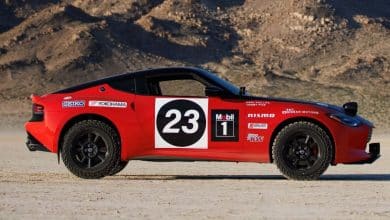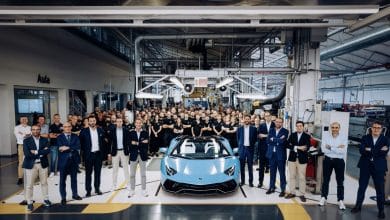The Tourbillon brings Bugatti into a new hybrid era
Since its rebirth orchestrated in 2005 by the big boss of the Volkswagen group, Ferdinand Piëch, Bugatti has only offered two models, the Veyron and the Chiron*. Technical and artistic triumphs, these works shook the automotive world with their astonishing performances. Now under the control of Rimac, a small manufacturer recognized for its electrical expertise, the French brand is entering a new era. The electrons will now coexist with the high octane fuel.
Here is the Tourbillon, an entirely new creation that seeks to reach out to new technologies while refusing to submit completely to them, for the sake of timelessness. In place of the 8L W16 powered by four turbochargers which reigned for almost 20 years, it is an 8.3L naturally aspirated V16 that is found in the center, at the rear. Co-created with the renowned engine manufacturer Cosworth, it alone produces 986 hp – as much as the mechanics of the Veyron – and can reach 9000 rpm.

PHOTO PROVIDED BY BUGATTI AUTOMOBILES
The Bugatti Tourbillon
But, as it's a Bugatti, this cavalry, as phenomenal as it is, is not enough. Two electric motors are thus bolted to the front axle and yet another is placed at the rear. These three mechanical components boost the power by 789 hp alone, for 1775 hp when they work in unison with the V16. The 0-100 km/h in 2 seconds testifies to the proven brutality of the experience, while the 0-300 km/h takes only 10 seconds. This Tourbillon later tops out at a staggering total of 445 km/h. On the other hand, it can travel 60 km in electric mode.

PHOTO PROVIDED BY BUGATTI AUTOMOBILES
The Bugatti Tourbillon
Not just a question of power
Barely longer than a Lamborghini Huracán, the Tourbillon remains a rather compact object. Its lines, which converge towards the legendary horseshoe grille, almost make us forget this observation. The posture remains resolutely Bugatti with these side arches enveloping the doors as well as this line which crosses the center of the bodywork. A huge retractable rear spoiler can also help with braking.

PHOTO PROVIDED BY BUGATTI AUTOMOBILES
The interior of the Bugatti Tourbillon
The interior sitting on the carbon fiber platform presents itself even more like fine jewelry than before. The instrumentation, made of titanium and precious stones, was developed by Swiss watchmakers in addition to inspiring the name of this unique car. The steering wheel also gravitates around the whole thing, without a branch to continually admire the thing. A single screen, which can be hidden on command, also provides access to the multimedia system.
Barely 250 examples of this supercar will ultimately be built in the Molsheim workshops at a price of 3.8 million euros (5.6 million CAN) from 2026. As exclusive as they are fascinating.
*Excluding special derivative models.












